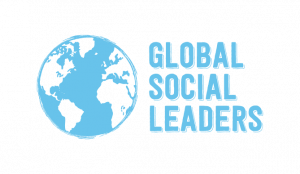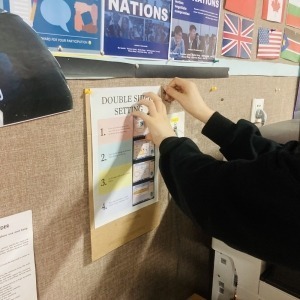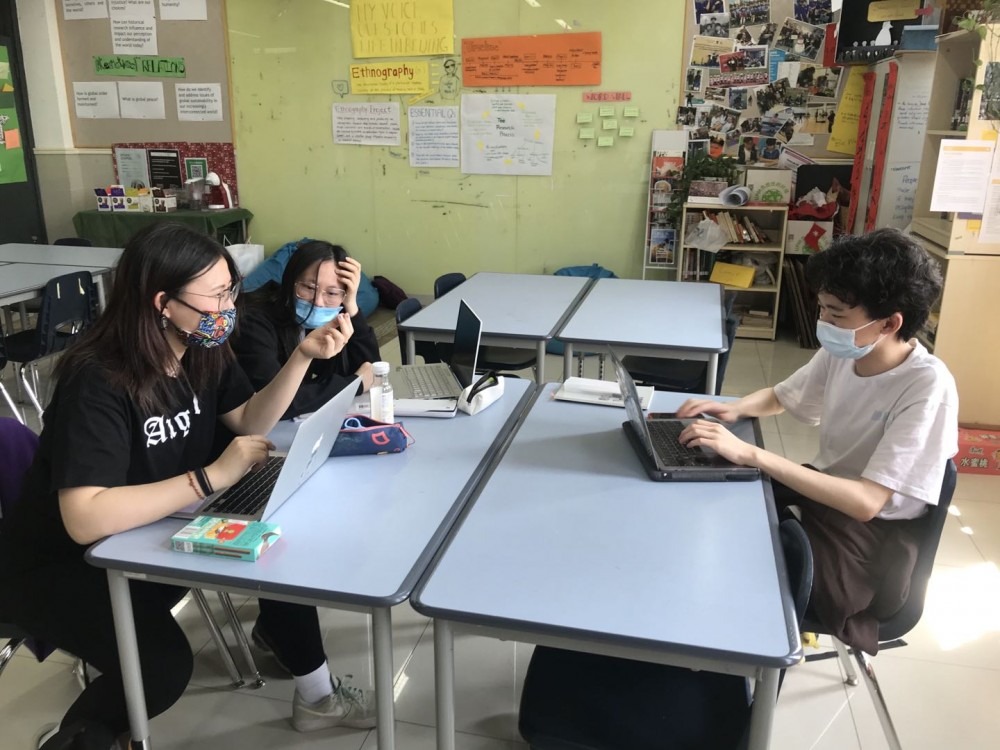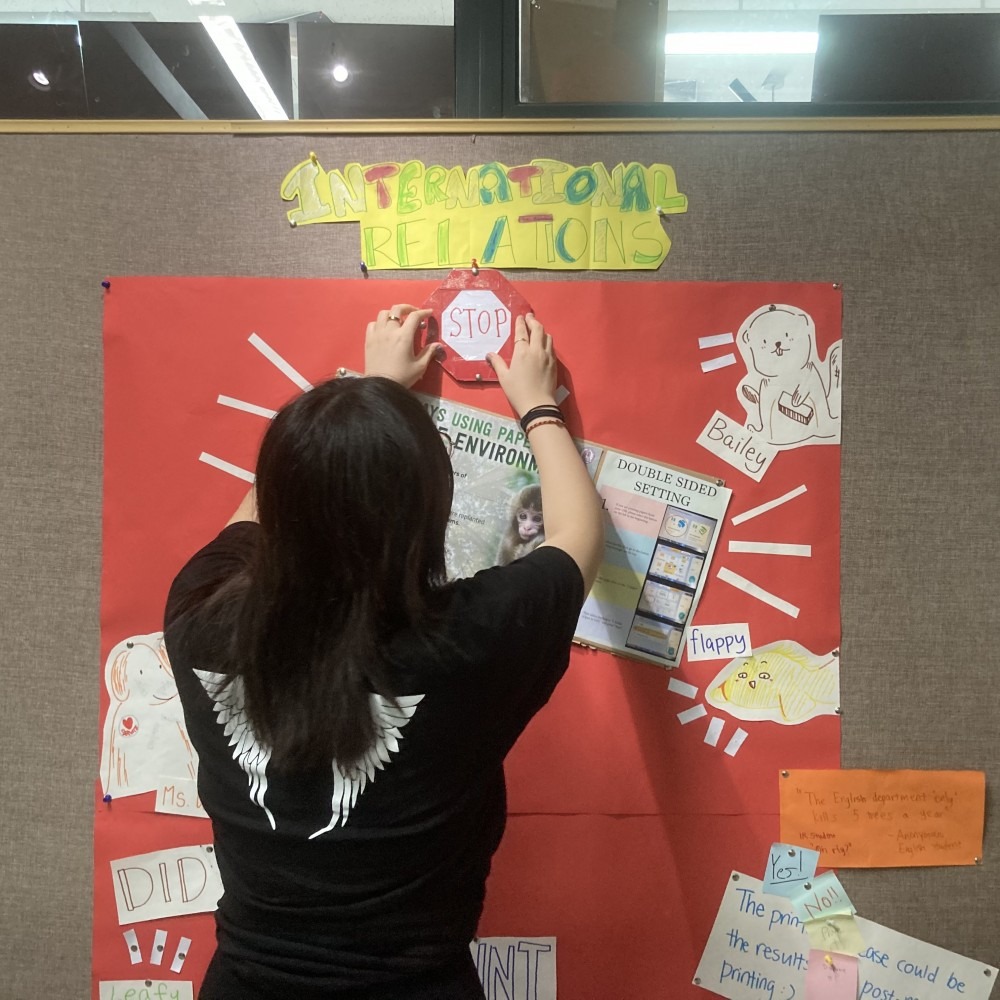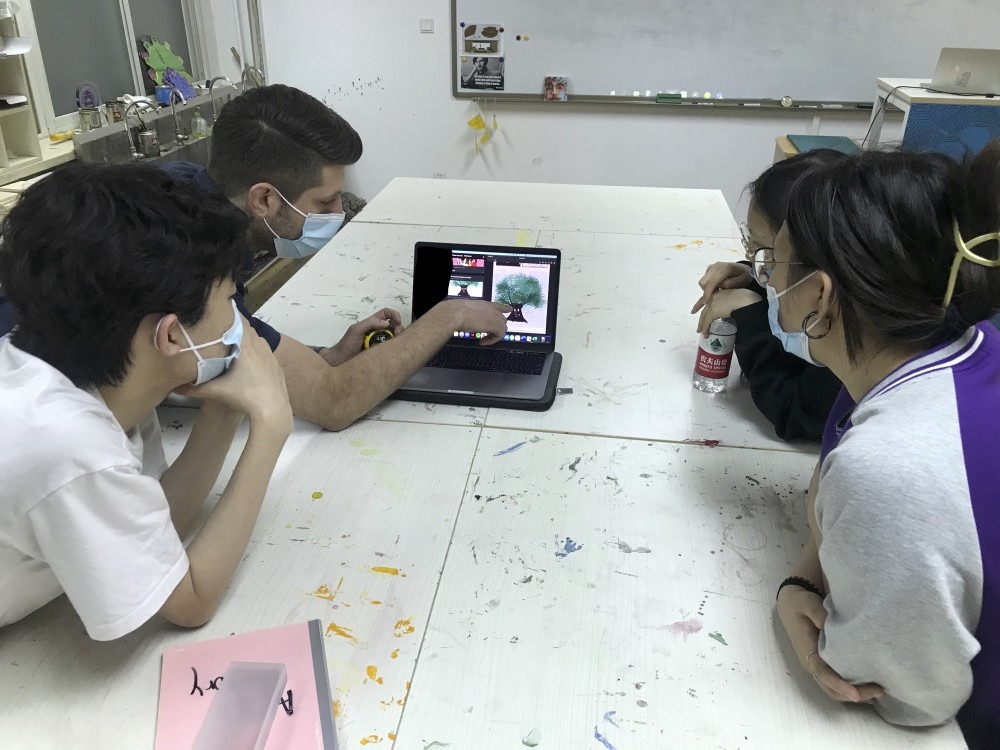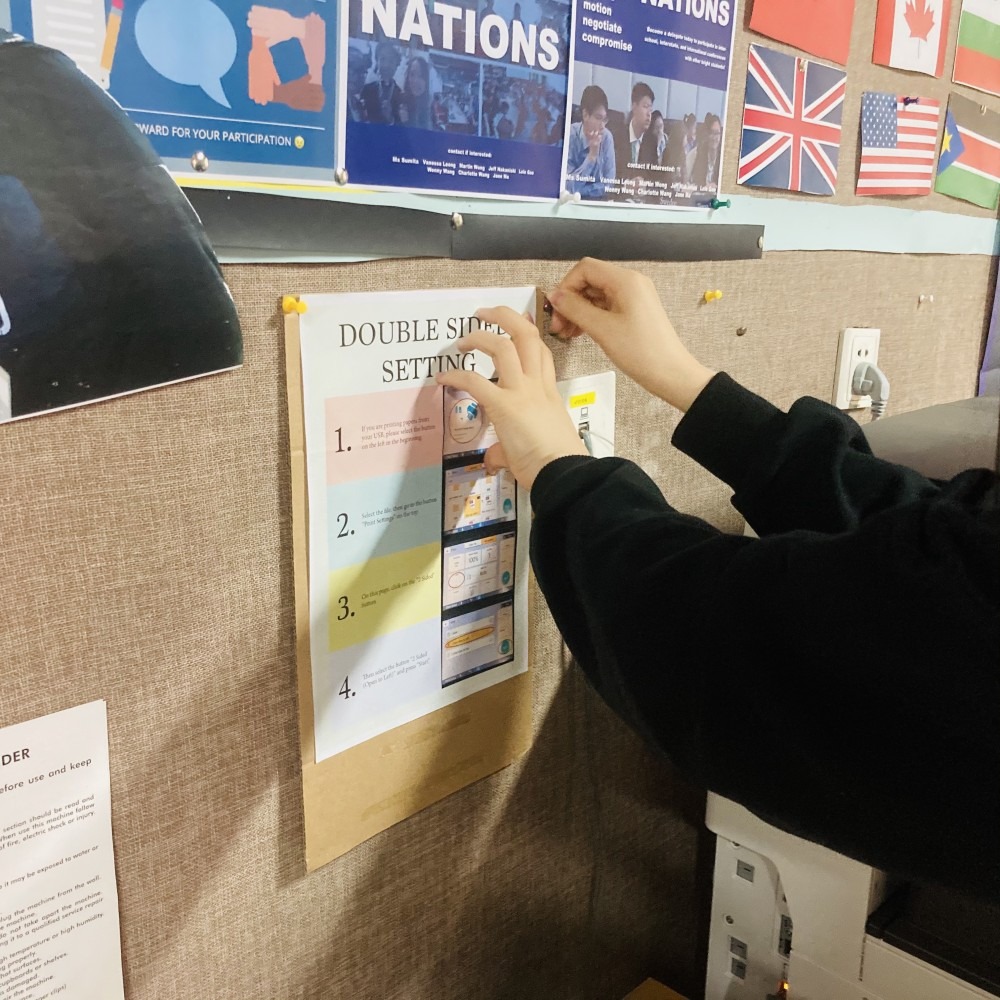We are delighted to share a blog written by student Andrew, from Tsinghua International School, who is part of team Sustainable Spartans delivering a Global Goals project for the 2020-21 GSL Global Goals Competition.
Their project is among over 957 social action projects currently running as part of the GSL movement and we are excited to be supporting them to design and lead positive social change in their community.
The journey with Less Paper, Paper Less is one that opened ourselves (and Leafy) to the world and allowed us to enlighten others about sustainability and its importance.
Project Summary
At the Northwest corner of Tsinghua University, Tsinghua International School (THIS)’s Spartans have initiated the project, Less Paper Paper Less, as not only a part of the International Relations class but also as a part of a mission to make the school more sustainable. This class has discussed everything from migration to globalization to sustainability to neoliberalism, and will soon discuss the dark themes behind terrorism. Within this class, the central goal is to achieve a brighter, more sustainable, and stronger future for not only the three students in the class, but also the entire school community and beyond. Seeking to make our community more sustainable, we looked into things that demanded change within our school and discovered something we all had in common: we printed way too much paper for way too many classes for way too many assignments due too soon. We therefore established our project with the goal of reducing paper printing by 20% in our school.
The Journey
After beginning our project, among the first things we did were surveying the student and teacher body as well as collecting preliminary data of the printers through the IT department, without telling anybody (to act as a control). We were shocked by the numbers but we knew that the people around us were aware of the need to reduce paper. Most respondents to our initial survey did not use ridiculous amounts of paper per week and almost all respondents knew how to take advantage of double sided printing at our school. For context, our school’s printers are free, meaning people don’t have an incentive to learn how to print double sided other than being sustainable. We therefore quickly built signs with instructions on how to print double sided which we posted on the four printers students use most often – one on each floor of our school building. As we put these up, we didn’t declare victory, but we did assume we had made a big step forward. It turns out we didn’t, as there were large hurdles in our way.
For us, the biggest challenge to date has been COVID-19. Though in Beijing, COVID has for the most part been brought under control, back in January the risk of a third wave put our school online for approximately one month. During this time, as we were off campus, we decided to continue our project through comic posts we made on our school’s Student Council official account on WeChat (similar to WhatsApp), as well as on the Instagram account we made (@sustainable.spartans). Beijing’s expat magazine Jingkids (https://mp.weixin.qq.com/s/_qAiREYCbCPKovDWQUFsOw) interviewed us asking us about our comics.
We also conducted an interview with us asking us about our comics, our project as a whole, and tips for how to be more sustainable. These comics helped us reach our audience and beyond and very quickly they engaged back with us.
The second biggest challenge to date was caused by our epiphany that the vast majority of printing at our school is done by teachers; of course, no surprise, but we were stunned by how much more teachers printed compared to students. In the data we gathered from the IT department during the month of February, followed by realizations that many students in our school building had newly printed booklets, we found out that two of the paper intensive classes at our school printed 53 total paper copies (front and back, thankfully) of a resource that they needed. We took this statistic into consideration as we moved through the next phases of our project. As we worked on putting up our data for the school to see, it was in the back of our minds how we could address the teacher body of our school rather than only the students, which the aforementioned comics were targeted to.
The Next Chapter
We’ve resolved the first challenge through numerous comics that introduce sustainability through a series of animals, which have become our project’s mascots. The second challenge, however – we are still facing this challenge and have decided that our next step in regards to overcoming it is to have a seminar with teachers directly. Our school is K-12, and a lot of printing happens in primary school (1-5). We plan on discussing directly with them potential alternatives to printing out every single worksheet on a sheet of paper, such as using school notebooks. Additionally, lots of our teachers have already begun to be more conscious of paper usage, which we would say is a win for everybody. At the end, though we’ve made progress in terms of finding out who specifically we should focus our attention on, we still have lots to do.
Finally, we are also planning to work with our school’s newly opened campus in order to promote sustainability to younger students and hopefully establish a long term sustainability club. Projects like ours die out if they only last a short period of time, so we hope that a younger student can be as passionate as us for years to come. The three of us behind this project are all going to university soon, and we sincerely hope younger students (maybe you!) can follow in our footsteps.
Through this process, we’ve learnt that even when we break sustainability goals into small steps, the process is still challenging and can’t be achieved in a short period of time. Sustainability can’t be narrowed down to projects – rather, it’s a way of life – but having projects to spread awareness is a great place to start.
